I'm a renter – here's how I learned to love my furnished apartment's ugly sofa
If you've just moved into a new rental and are presented with a sofa you don't love, there are ways to tackle the issue, explains our writer
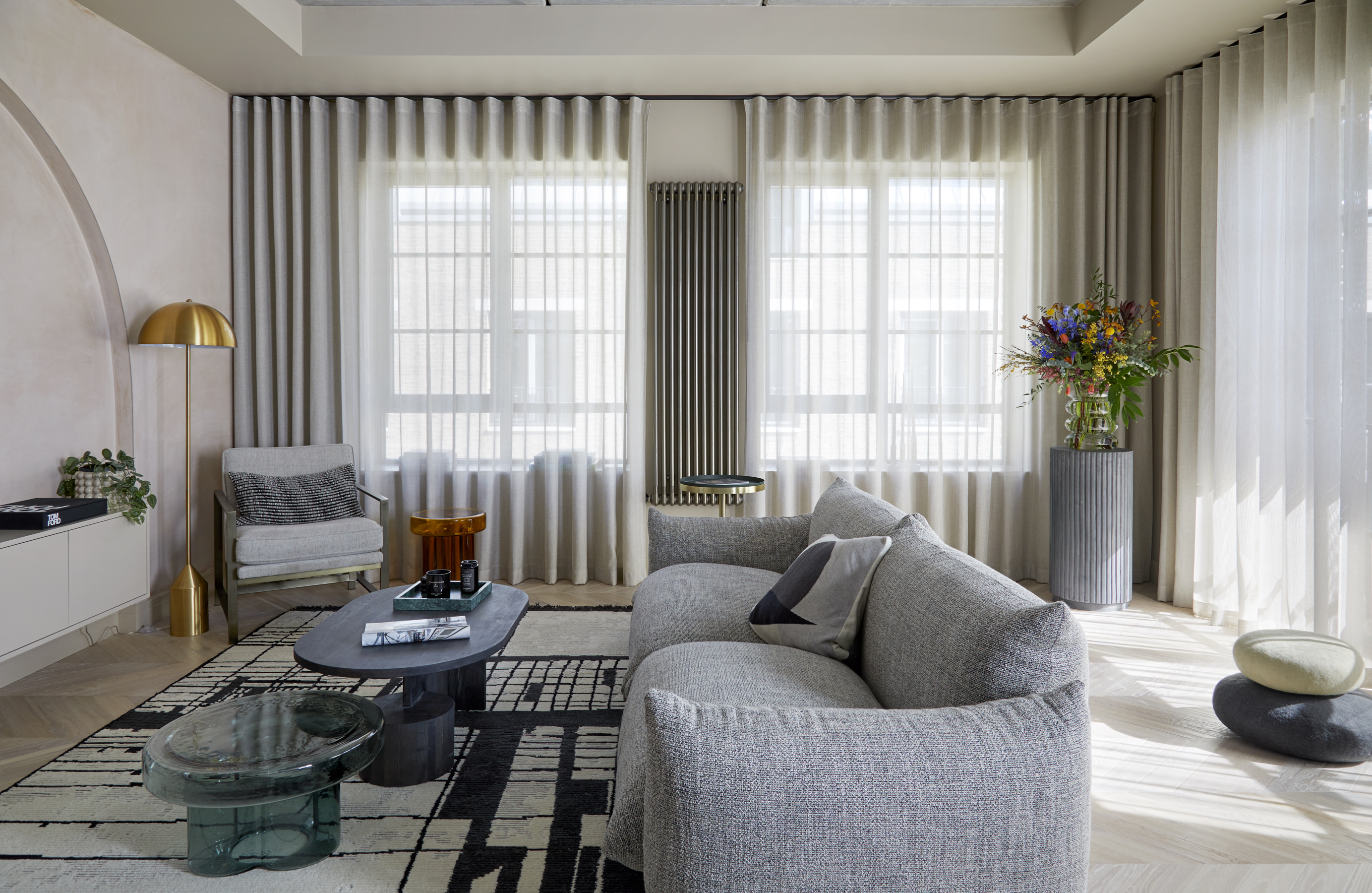

Moving into a fully-furnished apartment can be bittersweet. Sure, the stress of having to buy furniture to fill the space is taken off your to-do list, but once the dust settles and all the bags are unpacked, what happens when you're faced with furniture that you don't love?
This has recently become the story of my life – moving into a new rental apartment in a big city I'm faced with not one, but two unsightly sofas that almost seem to mock me as I scowl at them from the kitchen while making my morning coffee. If only by some miracle, I think to myself, I could swap them out.
That's the reality of most renters. In a furnished apartment, bad furniture can feel like it's part of the fabric of the building. It usually can't be moved to storage or sold – a suggestion a lot of landlords do not take well. Since the sofa is the focal point of the living space, owning one that you really don't like can suck the joy out of decorating a rental.
But there are, as I've discovered, ways to deal with the issue...
A quick note - none of the sofas pictured here are what we'd think of as ugly. They're merely to illustrate how to dress one.
7 ways to disguise an ugly rental sofa
The problem could be anything – the color, the print, uncomfortable cushions, or a dated style, but thankfully, there are some clever ideas to rescue you from your ugly sofa. Do keep in mind though, that a broken or tattered sofa is not something you should make peace with. Raise it as an issue with your landlord, and make sure you address that concern before you move in.
Having spent endless hours thinking of ways to work around my own unsightly rental sofa, I've been able to narrow down 7 tricks to either camouflage or give it new life.
1. Customize your sofa with a slipcover
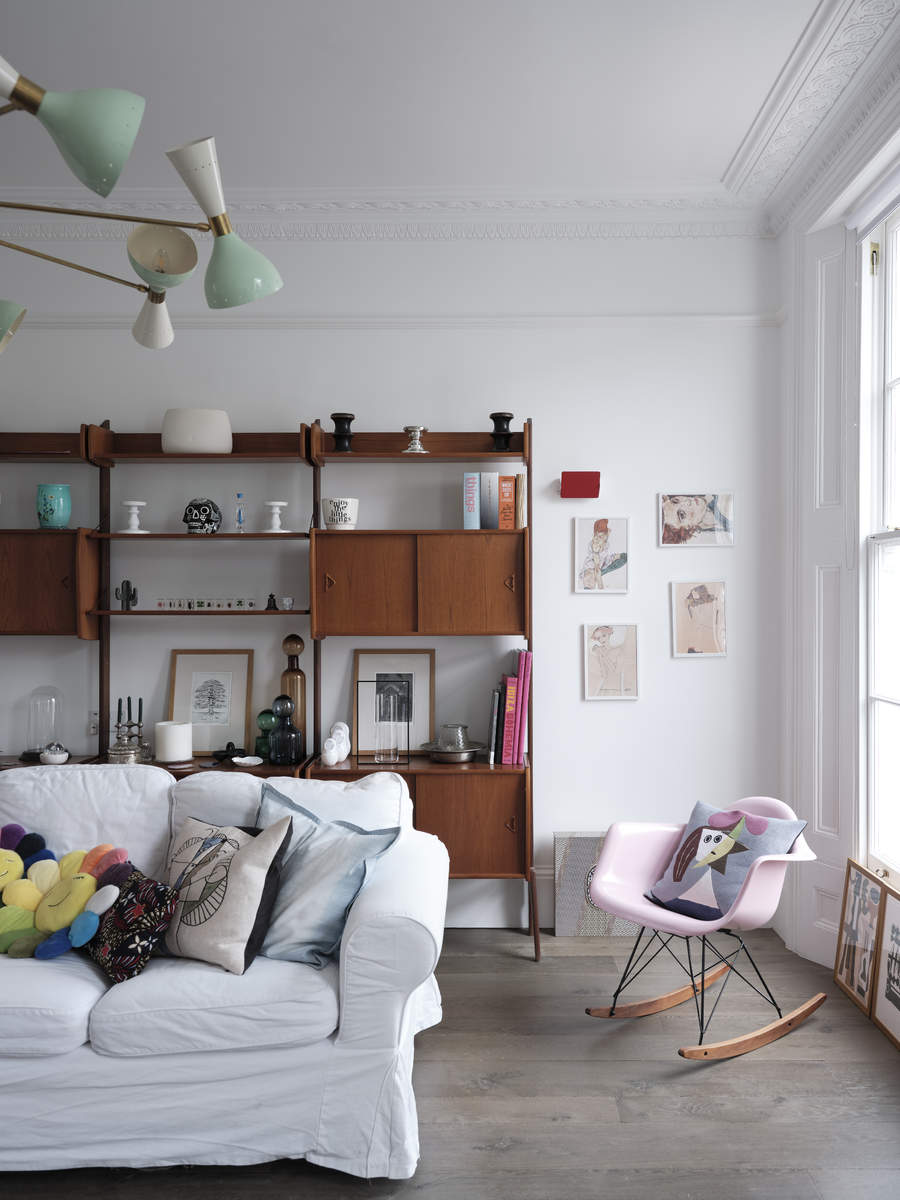
If you have the budget and patience, customize a slipcover for your sofa that includes individual covers for the frame and the cushions, so that it doesn't keep slipping off when people sit on it.
Choose a color that complements your apartment living room, and adds an interesting touch to the space.
Since you're getting these done from scratch, be careful about the material you choose. If you're a big fan of napping on the couch (like me), you'll do well with a natural, breathable fabric like pure cotton or linen. A synthetic blend with a tighter, smoother, and less liquid-absorbent weave like polyester or leather will be more enduring, especially if you have pets in your rental.
If going bespoke isn't an option for you, look for one-size-fits all covers (there are plenty of elasticated slipcovers on Amazon that might do the job) or if you have a recognizable sofa from a brand like IKEA, you'll find retailers who sell custom slipcovers for these, too.
2. Or blend it into the surroundings
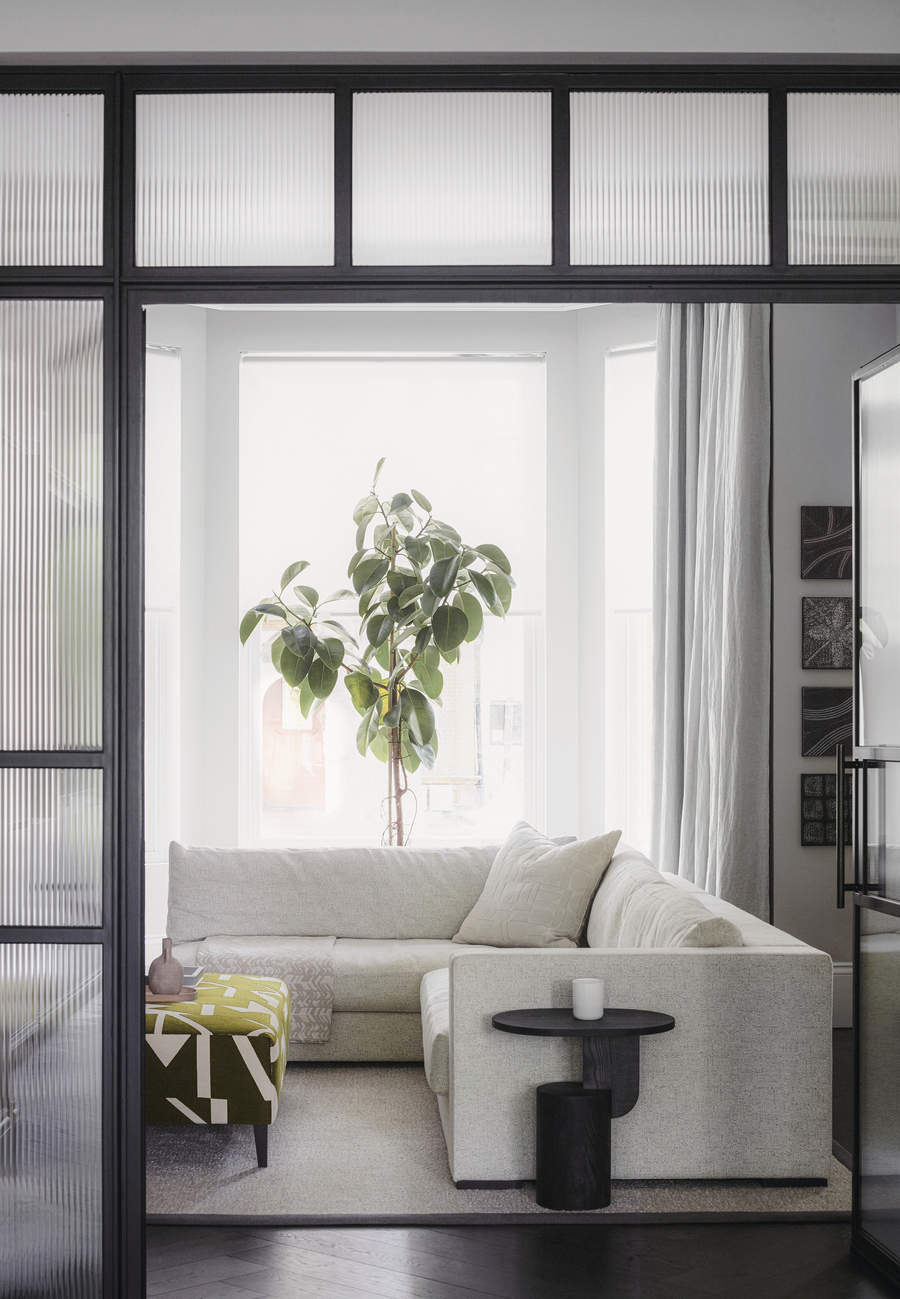
If your sofa doesn't quite fit with your other living room furniture pieces or design ethos, why not try blending it with its surroundings rather than making it a standout decor element? Consider painting or wallpapering the wall behind it in the same hues as the sofa if your landlord allows. If this isn't possible, spread the color on the couch around the space.
You could also consider DIY-ing oversized artworks that feature that color predominantly or ensure that the new rug you buy or the cushions you purchase for the other occasional chairs are in the same color as the sofa.
Alternatively, look for a piece of furniture that mimics the shape of your sofa. Of course, this may seem counter-intuitive – adding more of what you despise around in the room but with the art of excess, you move the annoying piece into oblivion, almost like white noise.
3. Fill it up with cushions
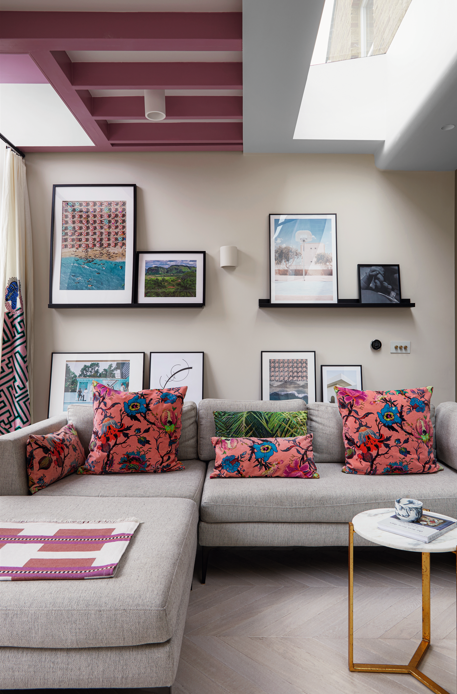
You'll be surprised at how useful cushions can be when it comes to adding large doses of color and pattern to a room, as well as masking the form of a truly unfortunate rental sofa. Take it from me... I've added so many cushions onto mine.
For a more measured masking act, and to deceive the eye into looking beyond the cushions, choose ones in different sizes so they fill up the seat completely. Consider a square, a rectangle, or even a bolster. Diving into a plush, cushy, and pillow-y sofa post a long day of work feels like bliss!
Also, bring in cushions in different materials to upgrade the texture of the sofa. Drowning your couch in a new texture will distract from the couch’s material and give your seat a softer touch, and help create a cozy living room.
4. Cover the sofa with blankets
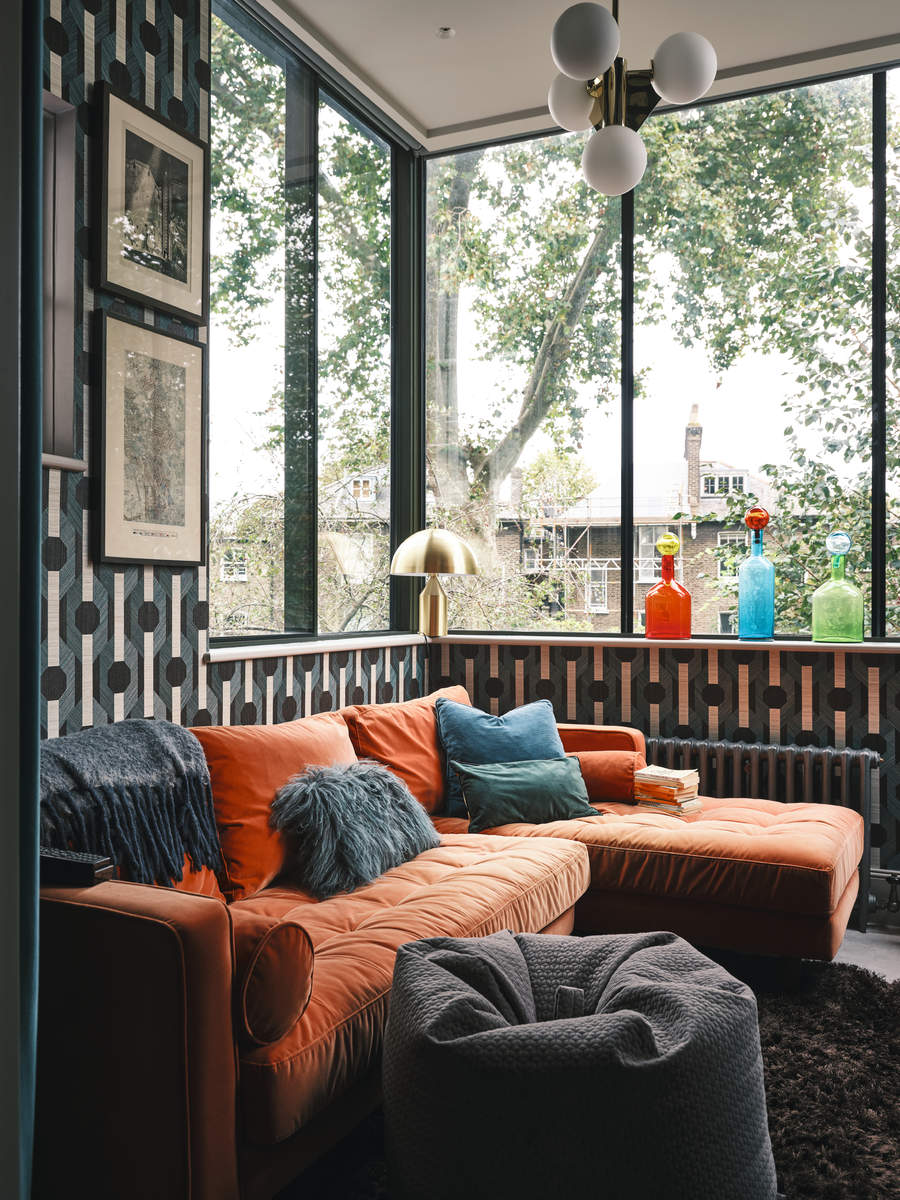
The thing I love about blankets is that they can appear to be casually strewn over a sofa, but still serve a specific purpose.
There are two ways to use the throw; it can either be artfully crumpled or neatly placed. Since you aim to show as less of the sofa as possible, I'd suggest you pull it across the seat and back and allow it to show as much as you can. Of course, give the choice of the throw a good, long thought. Pick a color and a pattern that complements your living room colors.
Consider using a blanket as a band that is placed in the center or on one side of the couch. You could even fold one on the armrests, altering the overall look of the couch. You can stick to solid colors, or play with patterns to create an even larger visual impact.
Add a living room rug just under the sofa (tuck it in behind the legs) for further fabric layering. Under all the soft furnishings and colors, who's going to notice your unattractive sofa?
5. Distract attention with an oversized artwork
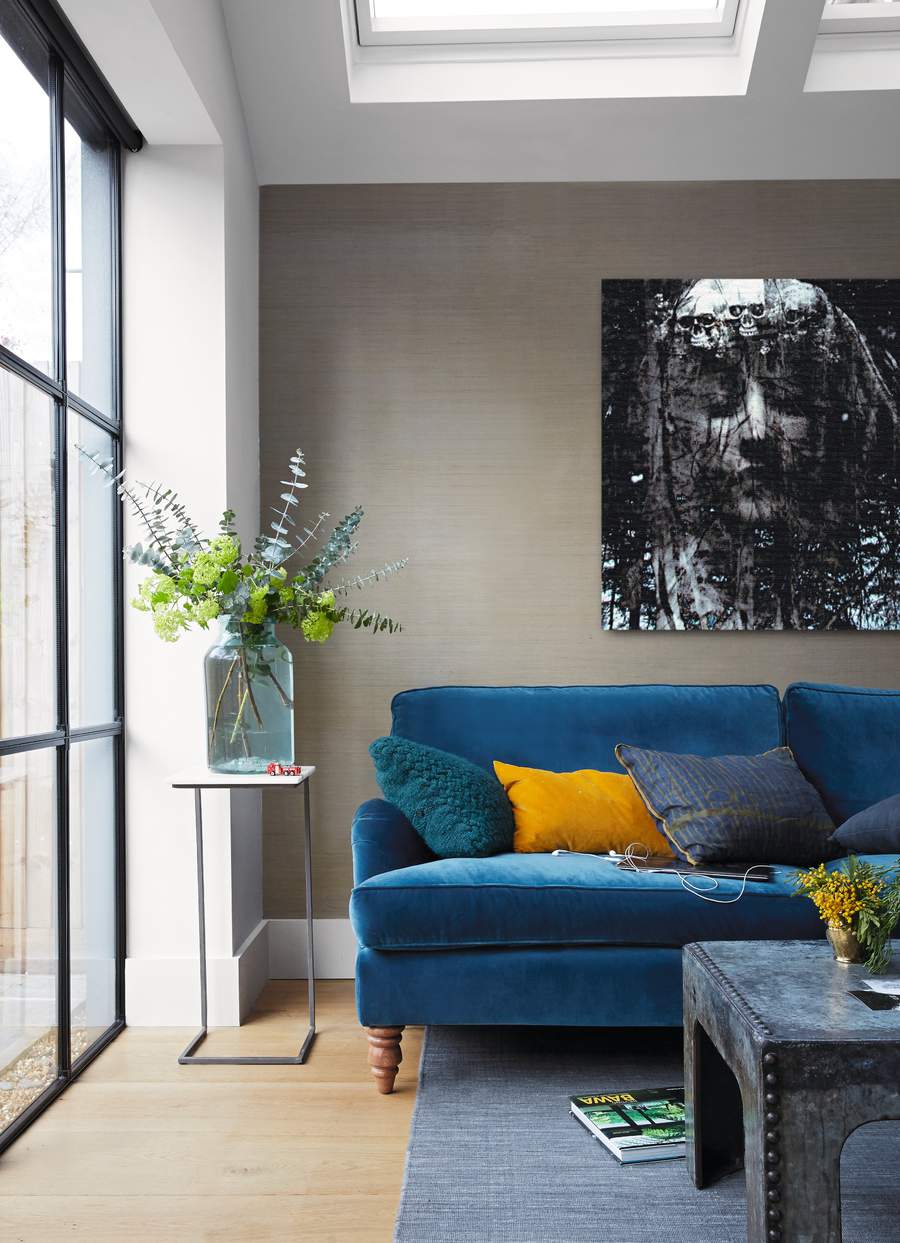
I've currently commissioned a large, abstract art piece in vibrant colors to hang just above my couch, in the hopes that people will first notice the painting, and the room's color scheme and look at the sofas as an afterthought (or not at all).
If you aren't sure of how an oversized artwork will look in your space, go for interesting living room accent wall ideas. Perhaps create a gallery wall with family or landscape images in pop-colored frames. You could even use vibrant colored masking tapes and create an interesting grid or graphic design on the wall with it.
Add wall hangings or even a collection of different-sized mirrors above the couch. The advantage of the latter is that people will be so distracted by their reflection, they won't have time to notice anything else!
6. If you have two sofas, separate and place them in different areas of the home
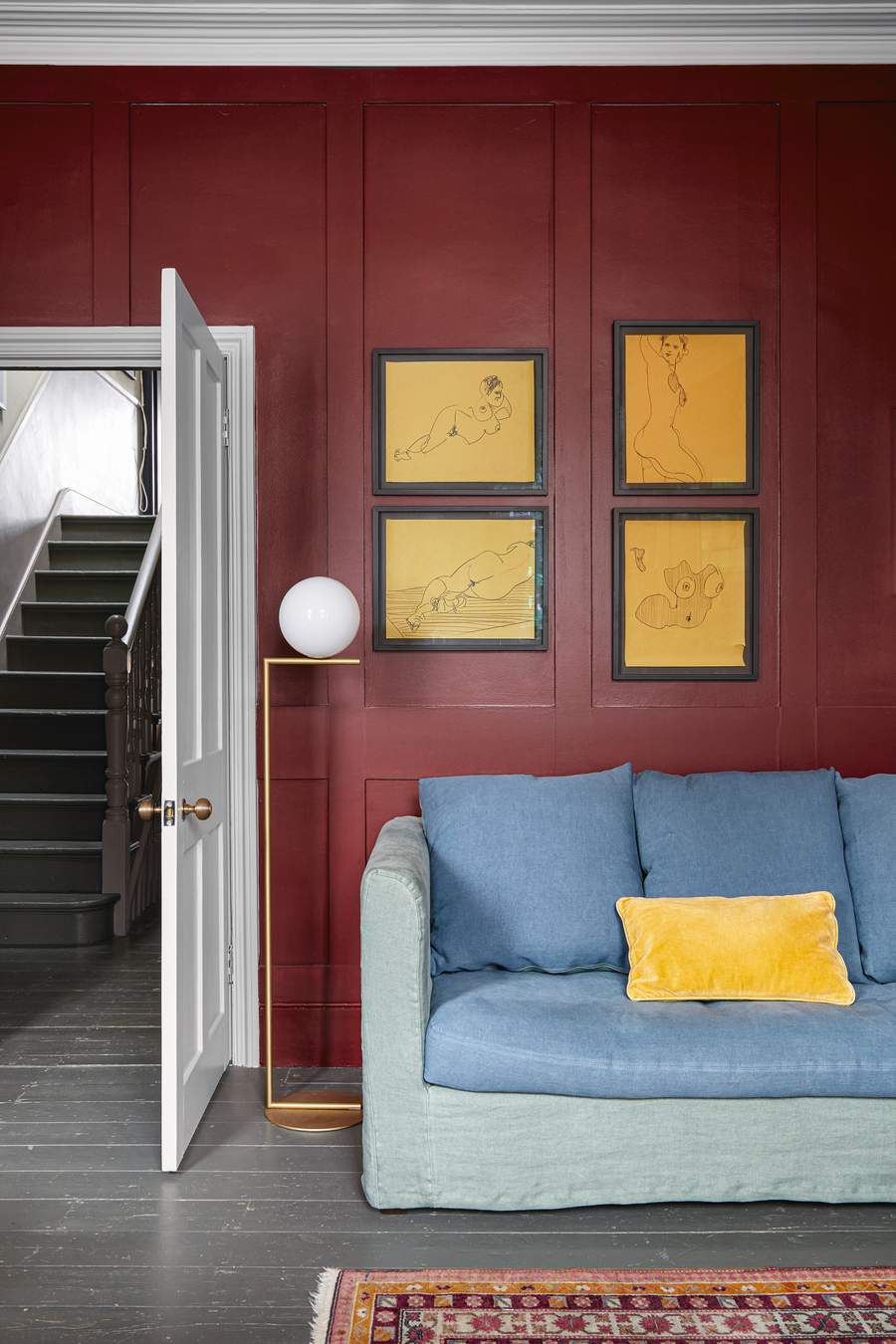
One unsightly sofa is enough to deal with, but what do you do when you have two? I suggest you separate them, if possible. Move one into another part of the room or even over to the next one (the bedroom or the dining). Then deal with the two pieces separately. In the living room, consider moving the sofa right under a window. This is also a great way to distract attention away from it and use the window and the vistas outside as the focal point. Perhaps add interesting living room window treatments like a vibrant shutter, a patterned blind, or beautiful, billowing sheer curtains.
The second sofa can be used as seating in your bedroom, where you layer it up with cushions and blankets. The sofa can be used in the dining as well, as a secondary seating solution.
7. Add a colorful accent chair to uplift the living room

Honestly, how far do you think you can go without purchasing any furniture for your rental? I broke in about two weeks and bought a recliner that I love.
Point is, whether you're ready to shop for a chair or even reupholster an existing one, the idea of bringing in an accent seater, placed strategically next to the non-pretty sofa is a win. Cocktail-style chairs without arms instead of a more traditional armchair are more budget and space-friendly options if that's what you're looking for.
Look at your living room paints or soft furnishing colors and choose an accent chair (or two!) in contrasting hues to make a statement.
Be The First To Know
The Livingetc newsletters are your inside source for what’s shaping interiors now - and what’s next. Discover trend forecasts, smart style ideas, and curated shopping inspiration that brings design to life. Subscribe today and stay ahead of the curve.

Aditi Sharma Maheshwari started her career at The Address (The Times of India), a tabloid on interiors and art. She wrote profiles of Indian artists, designers, and architects, and covered inspiring houses and commercial properties. After four years, she moved to ELLE DECOR as a senior features writer, where she contributed to the magazine and website, and also worked alongside the events team on India Design ID — the brand’s 10-day, annual design show. She wrote across topics: from designer interviews, and house tours, to new product launches, shopping pages, and reviews. After three years, she was hired as the senior editor at Houzz. The website content focused on practical advice on decorating the home and making design feel more approachable. She created fresh series on budget buys, design hacks, and DIYs, all backed with expert advice. Equipped with sizable knowledge of the industry and with a good network, she moved to Architectural Digest (Conde Nast) as the digital editor. The publication's focus was on high-end design, and her content highlighted A-listers, starchitects, and high-concept products, all customized for an audience that loves and invests in luxury. After a two-year stint, she moved to the UK and was hired at Livingetc as a design editor. She now freelances for a variety of interiors publications.
-
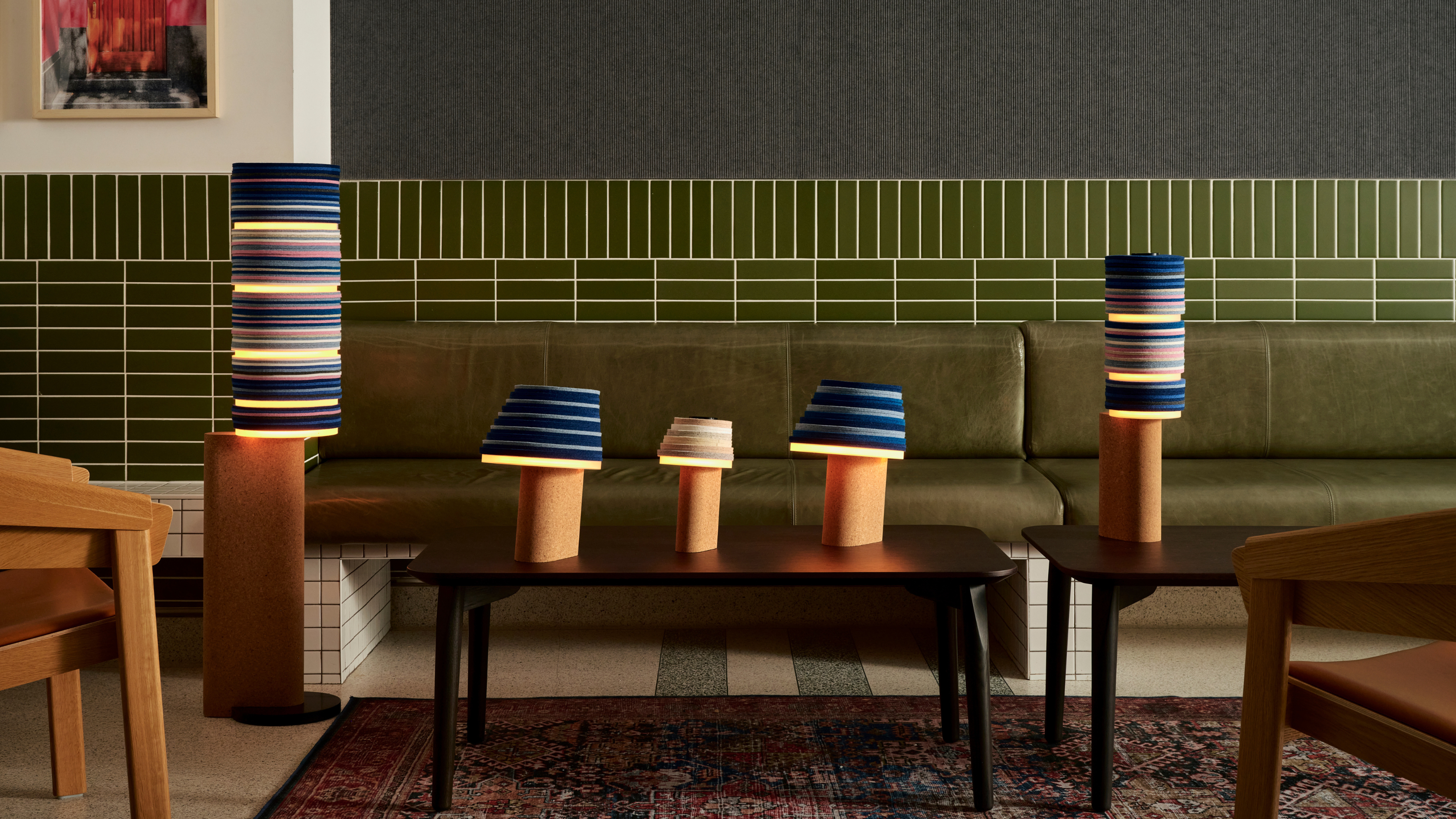 7 Sustainable Product Designs That Are Setting the Agenda for Environmentally-Conscious Homes in 2025
7 Sustainable Product Designs That Are Setting the Agenda for Environmentally-Conscious Homes in 2025From pillows made from textile waste to sanitaryware made in the world's first electric kiln, these brands are revolutionizing sustainable design — for the better
By Devin Toolen
-
 NYC's New Rules Forced Me to Find a Chic Compost Bin — Here's 7 Options Significantly Cheaper Than the $300 Fine
NYC's New Rules Forced Me to Find a Chic Compost Bin — Here's 7 Options Significantly Cheaper Than the $300 FineComposting is now mandatory in NYC. Here’s how to do it stylishly
By Julia Demer